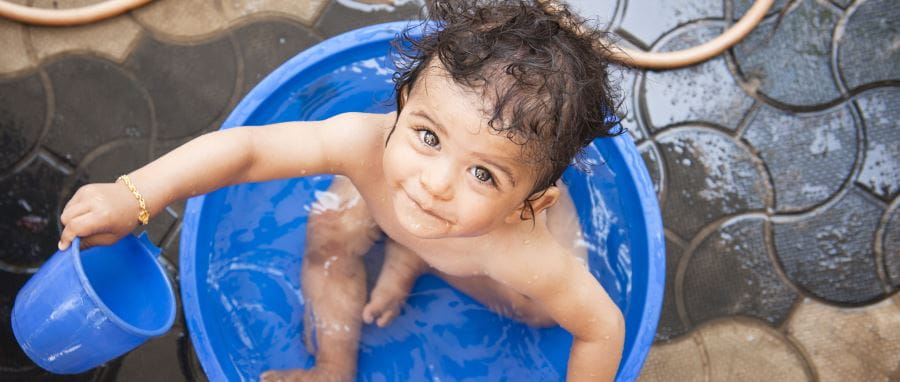
Drowning remains one of the leading causes of preventable death in kids under the age of five. A backyard pool is the most obvious location where a young child can drown, but there are many other water sources around the home that parents need to watch out for. A baby or toddler can drown in minutes in just centimetres of water so parents need to be on their guard all the time around the home – not just while swimming.
When do drowning deaths around the home occur?
Studies show the majority of toddler drowning deaths occur in the afternoon, when parents’ attention may be divided with the arrival home of other siblings, preparing of the evening meal, etc. Be aware of the additional distractions around this time, such as chores, phone calls, and attending to other children; do not let them interfere with your constant visual supervision of your child when around water.
Parties and social gatherings
Social situations are another time when parents need be mindful of the increased probability of drowning. Often at parties and gatherings, it is easy to get distracted and everyone can assume that someone else is watching the child/children and, as such, no one is supervising.
Nominating a designated “child supervisor” during parties is a way of ensuring that the children are supervised at all times. If this person needs to leave for any reason, ensure a new supervisor is appointed or rotate the supervision responsibilities.
Below are some other common places around the home that pose a risk for drowning.
Bathtubs
The bath is one of the most common locations for a young child to drown, with 25% of all fatal drowning deaths of kids aged 0-4 years occurring in bathtubs and spa baths. Often their parents leave the room for only a few minutes, but this can be enough for a baby to lose balance and slip under water.
Ensure you’re prepared with everything you need for the bath so there’s no need to leave the room, give your baby your full attention while bathing and empty the water out as soon as bath time is finished.
Toilets, Pet Bowls and Buckets
Toilets, pet bowls and buckets can pose an unexpected drowning risk for young children crawling or toddling around the home as they can easily fall head-first into a container they are exploring.
Fit your toilet with a child safety latch to keep the lid closed and prevent young children from accessing the open bowl and think about any buckets or tubs of water you might have around the house.
This includes clam shells, paddling pools, large dog bowls, water for mopping or washing the car, buckets collecting excess shower water for the garden or even eskies full of melted ice.
Make sure you don’t leave containers of water around your home or backyard. Always empty buckets and paddling pools out immediately after use, rather than thinking you will come back and deal with them “later”.
Fishponds and Water Features
Backyard ponds, water features, and fountains are often magnetic for your children as they are usually close to the home, full of interesting things like fish and plants and are rarely surrounded by a barrier.
To help prevent potential drowning incidents from occurring, water features should be separated from the house if possible and covered with strong wire mesh to prevent children from falling in.
Ensure your pond is fitted with a safety net to keep curious faces from getting too close. When properly installed, the net should easily support the weight of a child to keep them out of harm’s way.
Water features can also be drained and left empty prior to guests arriving. Alternatively, a safety mesh can be installed in the same way as ponds.
Inflatable/Portable Pools
Always empty inflatable paddle pools and shell pools immediately after use and store them upside down. WA law requires that all pools that hold more than 30cm in water depth must be fenced. Check the details of portable pool requirements
here.
Think about any other sources of water and ways to prevent access to these in the event of a child wandering off unnoticed. Access prevention is one of the four key ‘layers of protection’ that form part of the Keep Watch message. Read more about the program to prevent toddler drowning at the link below.
